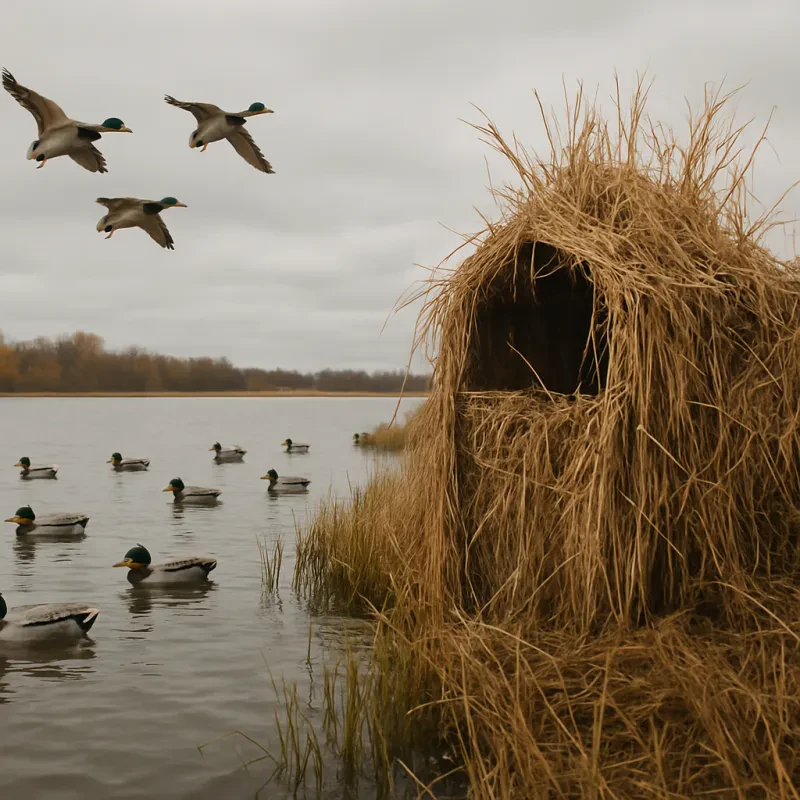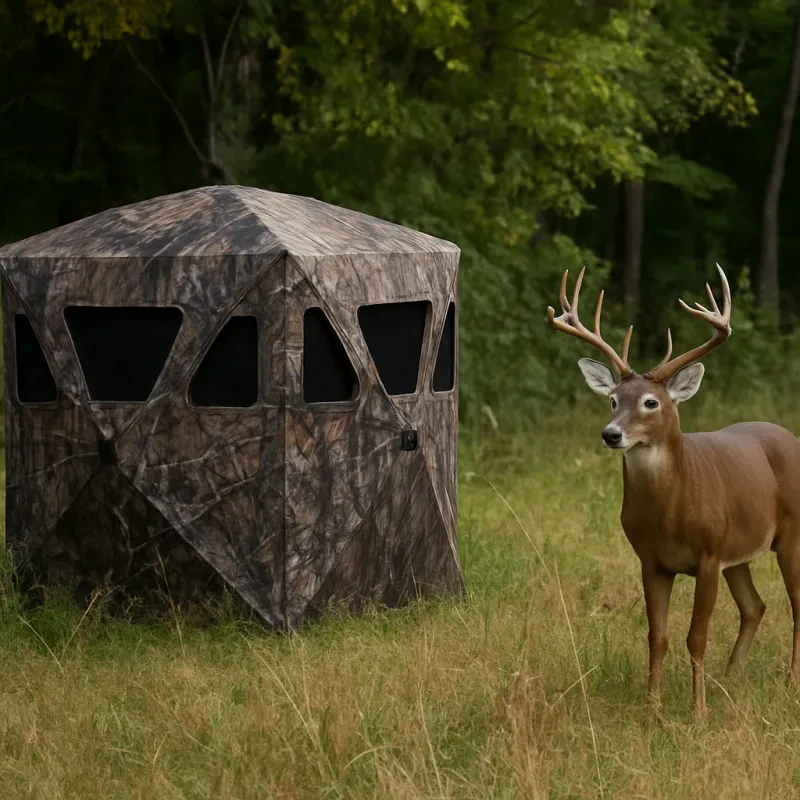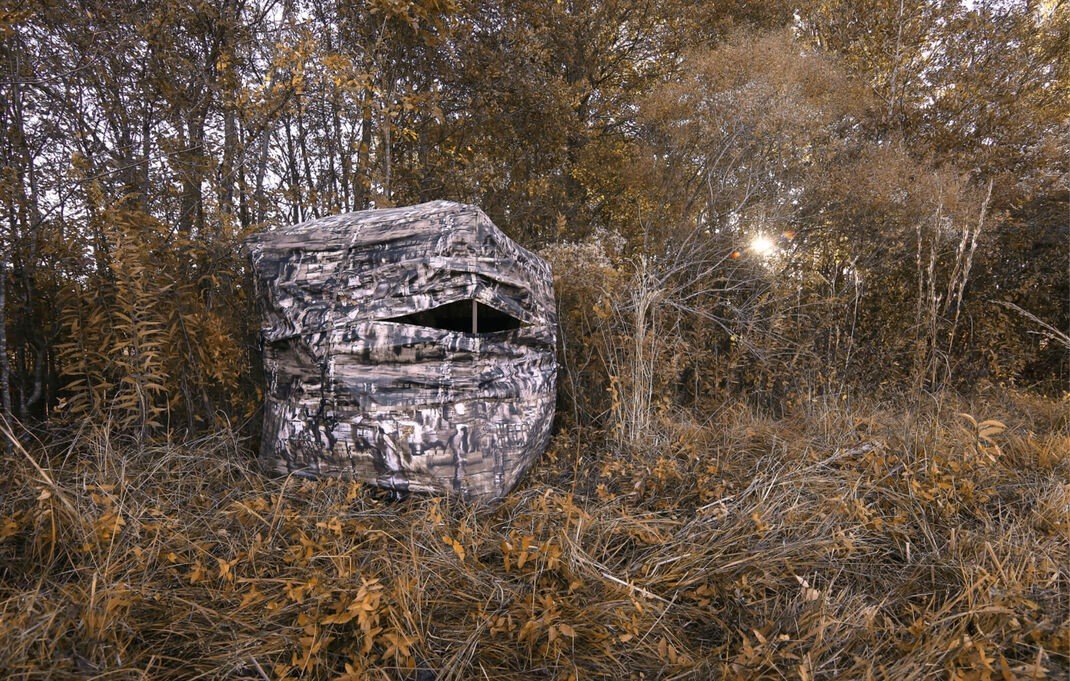When you're getting started with hunting, there are plenty of things to consider. One of the best ways to improve your chances is to invest in a good hunting blind. But before you even set one up, let’s tackle some common beginner hunting blind mistakes that can really trip you up.
First off, many beginners underestimate the importance of location. It might seem tempting to just plop your blind down wherever, but taking some time to scout the area first makes a world of difference. Look for trails, signs of wildlife, and natural cover to help hide your blind. Choosing the wrong spot can mean the difference between a great day out and a total bust.
Another mistake is not taking the time to properly conceal your blind. A bright, new blind can stand out like a sore thumb in nature. Make sure you break up its outline with branches, leaves, or even some local vegetation. This little step can help you blend in with your surroundings and keep you hidden from the keen eyes of wildlife.
Lastly, remember to keep noise and movement to a minimum. Many beginners forget how easily sound travels, especially in quiet woods. When you’re setting up or settling in, be conscious of your movements and sounds. Stick to soft chatter and gentle movements to avoid spooking nearby game. These beginner hunting blind mistakes can be easily avoided with a little forethought!
Choosing the Wrong Location to Hunt
One of the biggest Beginner Hunting Blind Mistakes is picking the wrong location to set up your blind. This can make or break your hunting trip. Imagine all the time you spend getting everything ready, only to find out you’re not even in a good spot. It's super frustrating, right?
When choosing a location, think about where the animals are most likely to travel. Look for signs like tracks or droppings. Try to set up near natural food sources, water, or trails. These areas attract animals, giving you a better chance of a successful hunt.
Also, consider how visible your blind is to the animals. If you're too exposed, they’ll spot you before you even get a chance to take your shot. Look for spots with natural cover, like trees or bushes, to help your blind blend in. If you can, set up a few days in advance to let the area settle down and keep the animals from being spooked.
Lastly, think about the wind direction. You don’t want your scent blowing right toward the animals you’re trying to hunt. Take the time to learn about wind patterns in the area. This little bit of planning can make a huge difference and can help you avoid major Beginner Hunting Blind Mistakes that many new hunters make.
Ignoring Comfort and Setup Needs
When you’re starting out with hunting blinds, it’s easy to overlook comfort and setup needs. After all, you’re focused on the thrill of the hunt, right? But here’s the thing: if you’re not comfortable or your setup isn’t ideal, you might find yourself wishing you had thought ahead.
First off, let’s talk about comfort. A hunting blind is where you’ll spend a good chunk of your day, so you’ll want to make sure it’s as cozy as possible. Think about bringing a comfy chair, extra layers to keep warm, or even a small cushion. Little things like this can make a huge difference, especially on long hunting days.
Now, onto the setup. Rushing through this part can lead to unnecessary hassle later. Make sure you choose the right spot and set up your blind well in advance. Crouching in an uncomfortable position because you didn’t pay attention to your surroundings can not only affect your hunting experience but also scare off the game. Trust me, taking the time to set up properly pays off when the action starts.
Finally, always have a backup plan. Weather can change, and things can go sideways. Having an alternative spot picked out or adjustable gear can help deal with unexpected situations. Remember, being prepared not only keeps you comfortable but also helps you avoid some common beginner hunting blind mistakes!
Forgetting to Camouflage Your Blind
So, what does it mean to camouflage your blind? It’s all about blending in with the surroundings. Start by using natural materials like branches, leaves, and grasses that match the area. You can also use burlap panels or camo netting to break up the outline of your blind. Just make sure to attach everything securely so it doesn’t blow away or shift around. A little effort can go a long way!
Remember, the goal is to create a natural look that helps you stay hidden. Try to keep things low-profile; you don’t need flashy colors or patterns that scream “look at me!” Think about what animals naturally see in their environment and mimic that.
Before your hunt, take a moment to walk around your blind from different angles. This will help you spot any areas that might still stand out. Make adjustments as needed, and don’t forget to change things up as the seasons change, since the surrounding foliage will also shift throughout the year.


